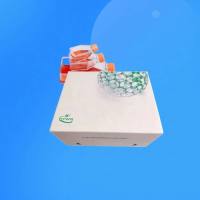Although the administration of insulin by injection is clearly a life-saving intervention for patients devoid of β-cells, this approach falls short of the remarkable titration of insulin delivery and consequent control of glucose levels achieved by normal, healthy individuals. In the absence of the physiological control of the plasma glucose concentrations, the daily injection of insulin has not been able to prevent the common complications of the disease, namely nephropathy, retinopathy, and neuropathy, as well as vascular complications. This has been confirmed in the recent diabetes control and complications trial which has demonstrated that intensive treatment of patients with insulin-dependent diabetes mellitus (IDDM), with tight glycemic control close to the control range, effectively delays the onset, and slows the progression, of the various diabetic complications (1 ). Therefore, it becomes mandatory to develop methods, applicable early in the course of the disease, and in any type 1 diabetic patient, for obtaining perfect metabolic control without increasing the risk of severe hypoglycemia. Consequently, the transplantation of islet tissue, either as whole pancreas or as isolated islets, has been pursued, because these techniques can provide near-normal blood glucose control, and thus have the potential to prevent diabetic complications.






